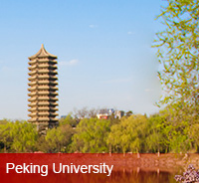Manufacturing Powerhouse: from A(rbitrage) to I(nnovations)
Mar 21-2021
China’s emergence as a large manufacturing country echoes its feat 200 years ago: In 1750, China accounted for one-third of global manufacturing capacity; By contrast, the UK only made up 1.6% of the world total. Since then, history has its share of twists and turns, seeing the subsequent rise of the UK and the US in churning out products. As China regains its manufacturing heft of late, Prof. Zhang Weiying of the NSD believed that it has yet to become a manufacturing powerhouse.
In terms of core technologies and innovations in manufacturing, Chinese ones are lamentably few to come by, said Prof. Zhang in a seminar. Besides, Chinese products trail Western ones in quality. The reality is that Western countries can also manufacture made-in-China products, but they choose not to.
China’s current size of manufacturing is largely attributable to the arbitrage activities of Chinese and foreign entrepreneurs taking advantage of the technologies and management know-how accumulated over the last 300 years. But to become a manufacturing powerhouse, only entrepreneurial innovations can pull it off. This is fully corroborated by what the UK, the US, Germany and Japan have gone through.
Innovations hinge on entrepreneurial endeavors as well as institutional and policy environments. Only when entrepreneurs have enough patience and long-term views can they be truly devoted to innovations. An innovation-oriented system entails free market competitions, free development of private enterprises, and free movement of the population.
Using R&D input density, patent numbers and the sales proportion of new products as a yardstick, Prof. Zhang crunched the data of different Chinese regions and found huge regional disparities. The gaps can be explained by different levels of marketisation, ownership structures, opening up (using trade and FDI as proxies), population migration and urbanization. Moreover, government interferences are found to have an adverse impact on innovations.
Prof. Zhang highlighted the close relationship between population migration and innovations. Cities with a high number of migrant workers – Shenzhen being a foremost example, hosting 65% of its residents from other Chinese provinces – exude with innovative vitality. Even so, Shenzhen has a long way to go before becoming an international metropolis. If 5 or 10% of its residents are foreigners having multi-year jobs in the city, its innovation capabilities will rise further, said Prof. Zhang.







